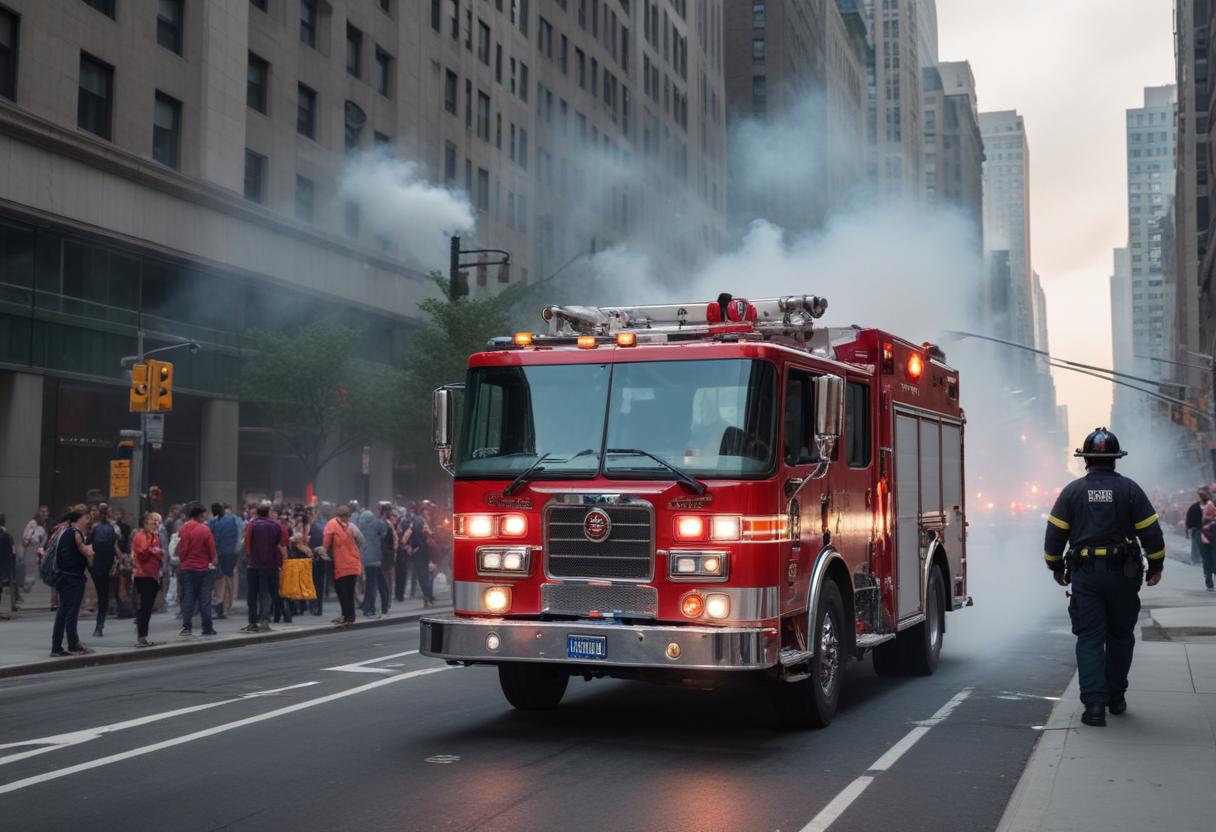The Future of Emergency Services: Harnessing AI to Save Lives and Enhance Efficiency

Emergency services are the frontline responders in critical situations, where every second counts. From natural disasters and medical emergencies to accidents and crises, emergency services need to be swift, efficient, and effective in their response. However, these services often face significant challenges, including resource allocation, response time, and communication issues. AI has the potential to revolutionize emergency services, offering innovative solutions to improve response times, optimize resource utilization, and ultimately save lives.
Emergency services encompass a broad range of functions, including:
Emergency Medical Services (EMS): Providing immediate medical care and transportation to hospitals.
Firefighting Services: Responding to fires, hazardous material incidents, and rescue operations.
Law Enforcement: Maintaining public safety, responding to crimes, and managing emergency situations.
Disaster Response: Coordinating relief efforts during natural and man-made disasters.
Despite their critical role, emergency services face numerous challenges that can hinder their effectiveness:
Resource Allocation: Ensuring the right resources are available and deployed efficiently.
Response Time: Reducing the time it takes to reach the scene of an emergency.
Communication: Ensuring seamless communication between different emergency responders and agencies.
Data Management: Handling and analyzing large volumes of data in real-time to make informed decisions.
Predictive Capabilities: Anticipating emergencies and preparing accordingly.
AI technologies offer powerful tools to address these challenges and transform emergency services. Here’s how AI can enhance various aspects of emergency response:
Predictive Analytics for Resource Allocation:
Demand Forecasting: AI can analyze historical data to predict when and where emergencies are likely to occur, allowing for better preparation and resource allocation.
Dynamic Resource Management: AI systems can dynamically allocate resources based on real-time data, ensuring that emergency responders are optimally distributed.
Optimizing Response Times:
Route Optimization: AI algorithms can calculate the fastest and safest routes for emergency vehicles, reducing response times significantly.
Traffic Management: AI can integrate with city traffic management systems to clear pathways for emergency vehicles, ensuring they reach the scene quickly.
Enhanced Communication:
Real-Time Coordination: AI-powered communication platforms can facilitate real-time coordination between different emergency responders, ensuring a unified and efficient response.
Natural Language Processing (NLP): NLP can help dispatch centers understand and prioritize emergency calls more effectively, ensuring that critical situations are addressed promptly.
Data Management and Decision Support:
Real-Time Data Analysis: AI can process vast amounts of data in real-time, providing emergency responders with critical information to make informed decisions.
Incident Mapping: AI can create real-time maps of ongoing incidents, helping responders navigate complex emergency scenes and identify key areas of concern.
Predictive and Preventive Capabilities:
Disaster Prediction: AI can analyze weather patterns, seismic data, and other indicators to predict natural disasters, allowing for proactive measures to mitigate impact.
Crime Prediction: AI can identify crime hotspots and predict potential criminal activities, enabling law enforcement to take preventive actions.
Several emergency service organizations have successfully integrated AI technologies, demonstrating significant improvements in efficiency and effectiveness:
New York Fire Department (FDNY):
Challenge: High response times and inefficient resource allocation.
Solution: Implemented an AI-powered predictive analytics system to forecast fire incidents and optimize resource allocation.
Result: Reduced response times and improved resource utilization.
Challenge: Delays in reaching patients and high traffic congestion.
Solution: Deployed AI-based route optimization and traffic management systems.
Result: Significantly reduced response times and improved patient outcomes.
Los Angeles Police Department (LAPD):
Challenge: Rising crime rates and inefficient crime prediction methods.
Solution: Adopted AI-driven crime prediction models to identify hotspots and allocate resources effectively.
Result: Reduction in crime rates and improved public safety.
The integration of AI in emergency services is just beginning, and the future holds even more transformative potential:
AI-Driven Drones:
Search and Rescue Operations: AI-powered drones can be deployed for search and rescue operations, providing aerial views and identifying victims in hard-to-reach areas.
Disaster Assessment: Drones can assess disaster-affected areas quickly, providing real-time data to emergency responders.
Robotics:
Automated Rescue Bots: AI-driven robots can assist in rescue operations, especially in hazardous environments, reducing risks to human responders.
Medical Assistance: Robots can provide medical assistance and transport supplies to disaster-stricken areas.
AI-Powered Wearables:
Responder Health Monitoring: AI-integrated wearables can monitor the health and safety of emergency responders in real-time, alerting them to potential hazards.
Victim Identification: Wearables can help identify and track victims in large-scale emergencies, ensuring they receive timely assistance.
Virtual Reality (VR) Training:
AI has the potential to revolutionize emergency services by enhancing resource allocation, optimizing response times, improving communication, and providing predictive capabilities. The integration of AI-driven solutions can lead to more efficient and effective emergency responses, ultimately saving lives and improving public safety. As AI technologies continue to evolve, emergency services will be better equipped to handle the complexities of modern emergencies.
At AiDOOS, we specialize in connecting emergency service organizations with AI experts to implement cutting-edge solutions. If you're interested in exploring how AI can transform your emergency services, we would be delighted to provide a quick demo.
Ready to revolutionize your emergency services with AI?
Contact Us today to schedule a demo and discover how our AI solutions can enhance your response capabilities and save lives.